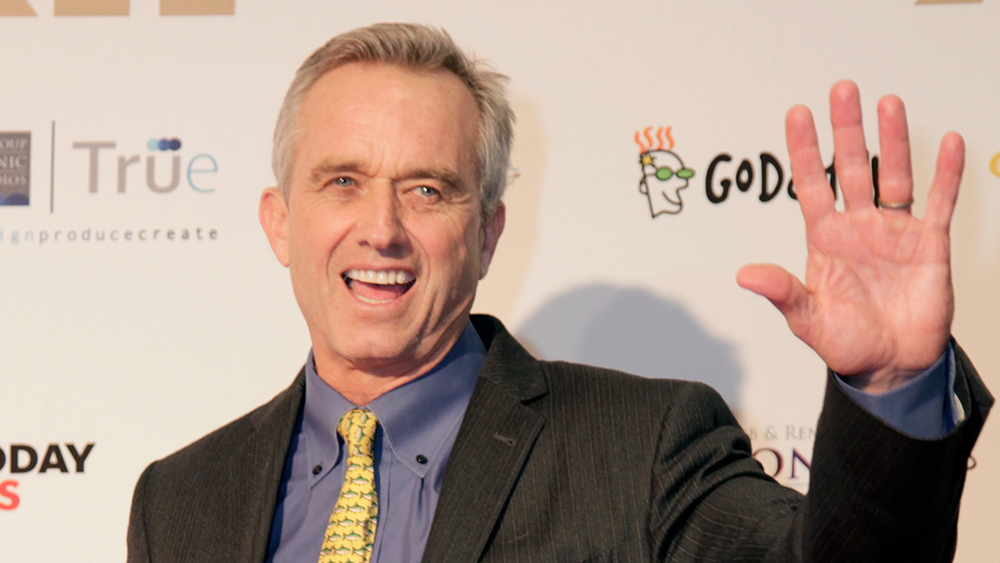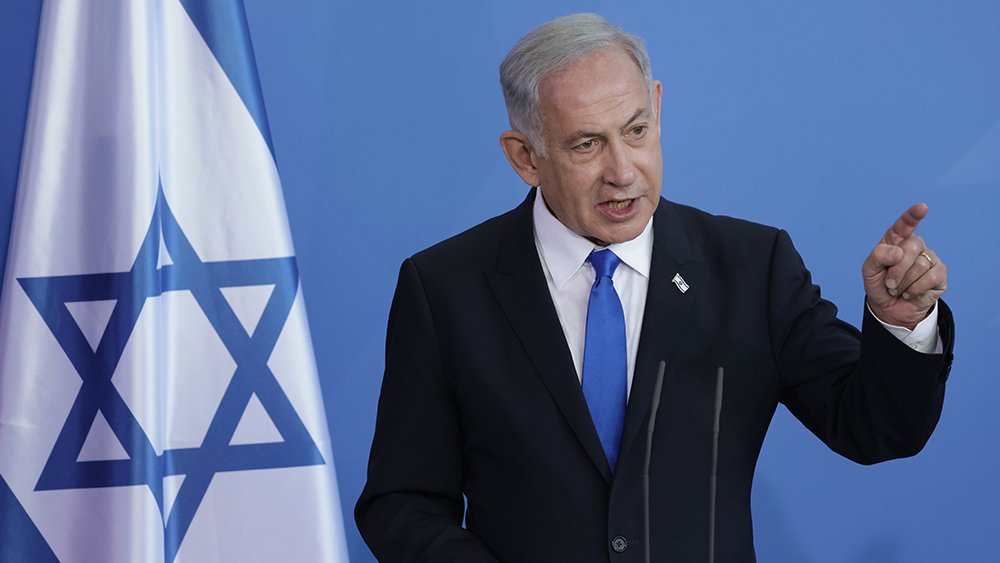The untold story of Christian Zionism’s rise to power in the United States
11/07/2023 / By News Editors

The largest pro-Israel organization in the United States is not composed of Jews, but of Christian evangelicals, with a total membership of 7 million, more than 2 million more members than the entirety of the American Jewish community.
(Article by Whitney Webb republished from MintPressNews.com)
Members of this organization, Christians United for Israel (CUFI), met in Washington on Monday, attracting thousands of attendees and featuring speeches from Israeli Prime Minister Benjamin Netanyahu, Secretary of State and former CIA Director Mike Pompeo, Vice President Mike Pence, and National Security Advisor John Bolton. CUFI’s leader, controversial evangelical preacher John Hagee, has met with President Donald Trump several times and was recently part of an exclusive White House meeting in March on the administration’s upcoming “peace plan” for Israel and Palestine.
CUFI is but one of many organizations throughout American history that have promoted the state of Israel and Zionism on the grounds that a Jewish ethnostate in Palestine is a requirement for the fulfillment of end-times prophecy and necessary for Jesus Christ to return to Earth — an event Christians often refer to as “the Second Coming.”
While organizations like CUFI and its predecessors have long seen the creation of the state of Israel in 1948, and the later Israeli victory and conquest of Jerusalem in 1967, as the fulfillment of Biblical prophecy, there is one prophecy that this sect of evangelical Christians believes is the only thing standing between them and the Second Coming. There are estimated to be more than 20 million of these Christians, often referred to as Christian Zionists, in the United States and they are a key voting bloc and source of political donations for the Republican Party.
As was explored in previous installments of this series, these Christian Zionists, much like religious Zionist extremists in Israel, believe that the Al Aqsa mosque and the Dome of the Rock must be replaced with a Third Jewish Temple in order to usher in the end times.
These two groups of different faiths, since the 19th century, have repeatedly formed an opportunistic alliance in order to ensure the fulfillment of their respective prophecies, despite the fact that members of the other faith are rarely if ever on the same page in their interpretations of what occurs after the temple’s construction.
This alliance, based on a mutual obsession with hastening the coming of the Apocalypse, continues to this day and now, more than at any other time in history, these groups have reached the heights of power in both Israel and the United States. Parts I and II of this exclusive series explored how this branch of religious Zionism has come to dominate the current right-wing government of Israel and has led Israel’s current government to take definitive steps towards the destruction of the Al Aqsa mosque and the imminent construction of a Third Temple.
Now this installment (Part III) will show how this movement’s Christian counterpart in the United States, Christian Zionism, has likewise become a dominant force in American politics, particularly following the election of Donald Trump to the presidency, where this apocalyptic vision is a major driver behind his administration’s Middle East policy.
Yet, this fire-and-brimstone vision of the end times has long been a guide for prominent figures in American history and the American elite, even predating Zionism’s founding as a political movement. Thus, Christian Zionism’s influence on Trump administration policy is merely the latest of a long list of examples where prophecy and politics have mixed in American history, often with world-altering results.
PURITANS, PROPHECY AND PALESTINE
Accounts of the role of European and North American Christians in the creation of the state of Israel often begin with the Balfour Declaration of 1917, but the efforts of certain Christian groups in England and the United States to create a Jewish state in Palestine actually date back centuries earlier and significantly predate Zionism’s official founding by Theodore Herzl.
Among the first advocates for the physical immigration of European Jews to Palestine were the Puritans, an offshoot of Christian Protestantism that emerged in the late 16th century and became influential in England and, later, in the American colonies. Influential Puritans devoted considerable interest to the role of Jews in eschatology, or end-times theology, with many — such as John Owen, a 17th-century theologian, member of parliament, and administrator at Oxford — believing that the physical return of Jews to Palestine was necessary for the fulfillment of end-time prophecy.
While the Puritan roots of what would later become known as Christian Zionism are often overlooked in modern accounts of where and why American evangelical support for Israel began, its adherents still clearly acknowledge its legacy. For instance, on Monday at the CUFI conference, Pompeo, himself a Christian Zionist known for his obsession with the end times, told the group the following:
Christian support in America for Zion — for a Jewish homeland — runs back to the early Puritan settlers, and it has endured for centuries. Indeed, our second president [John Adams], a couple years back, said… ‘I really wish the Jews again in Judea an independent nation.’
These Puritan beliefs, which persist today and have only grown in popularity, became more entrenched in England and colonial America with time, especially among the monied political class, and led to a variety of interpretations regarding exactly what the Bible says about the end times. Among the most influential was the development of Christian “dispensationalism,” an interpretive framework that uses the Bible to divide history into different periods of “dispensations” and sees the Bible’s prophetic references to “Israel” as signifying an ethnically Jewish nation established in Palestine.
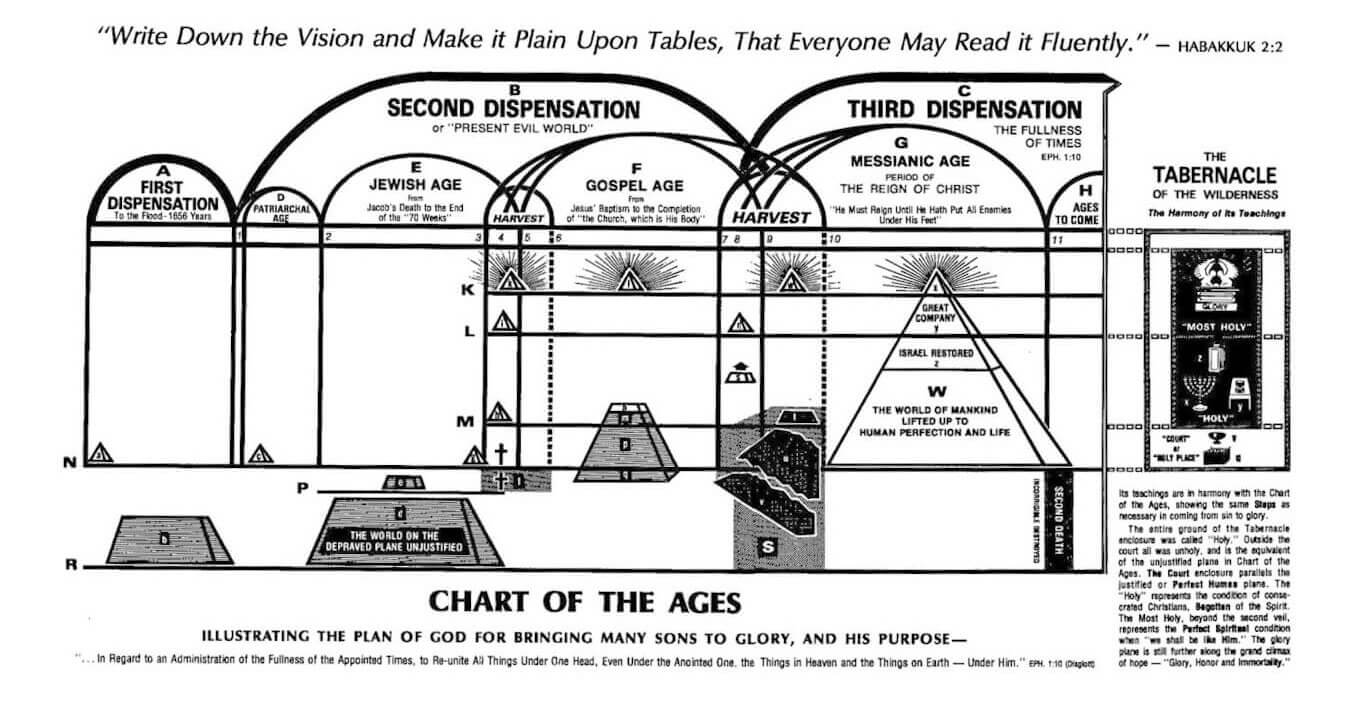
Charles Russell’s visual interpretation of Darby’s ‘dispensations’ circa 1886
Dispensationalism was largely developed by English-Irish preacher John Nelson Darby, who believed that the God-ordained fates of Israel and the Christian church were completely separate, with the latter to be physically removed from the Earth by God prior to a foretold period of earthly suffering known as the Tribulation.
In Darby’s view, the Tribulation would begin following the construction of a Third Jewish Temple on the Temple Mount in Jerusalem. This belief in the physical removal of Christians from the Earth prior to the Tribulation, widely known as “the rapture,” was invented by Darby in the 1820s and its lack of scriptural support has been widely noted by theologians of various denominations as well as biblical scholars. However, it is important to point that there are differences among dispensationalist Christians as to whether the rapture will occur before, during or after the Tribulation period.
Yet, despite its relatively short existence as an idea and lack of support in the Bible, the rapture was enthusiastically adopted by some churches in England and the United States, particularly the latter. This was largely thanks to the work of highly controversial theologian Cyrus Scofield.
Notably, Darby’s brand of Christian eschatology coincides with similar developments in Jewish eschatology, namely the ideas of Rabbi Zvi Hirsh Kalisher and the creation of a new branch of Jewish messianism that believed that Jews must proactively work to hasten the coming of their messiah by immigrating to Israel and building a Third Temple on the Temple Mount in Jerusalem. Darby’s beliefs, and those he inspired promoted something similar in the sense that Christians could hasten the coming of the rapture and the Tribulation by promoting the immigration of Jews to Israel as well as the construction of a Third Jewish Temple.
CHRISTIAN ZIONISTS PAVE THE WAY FOR THEODORE HERZL
Darby traveled to North America and several other countries to popularize his ideas, meeting several influential pastors throughout the English speaking world, including James Brookes, the future mentor of Cyrus Scofield. His travels and the spread of his written works popularized his eschatological views among certain circles of American and English Christians during the religious revival of the 19th century. Darby’s beliefs were particularly attractive to the elite of both countries, with some English noblemen placing newspaper advertisements urging Jews to immigrate to Palestine as early as the 1840s.
Another prominent figure influenced by Darby’s end-times doctrine was the American preacher Charles Taze Russell, whose church later gave rise to several different churches, including the Jehovah’s Witnesses. Decades before the founding of modern political Zionism, Russell began preaching — not just to Christians, but to Jews in the United States and elsewhere — about the need for mass Jewish immigration to Palestine.
As Rabbi Kalisher had done a few decades prior, Russell penned a letter in 1891 to a wealthy member of the Rothschild banking family, Edmond de Rothschild, as well as Maurice von Hirsch, a wealthy German financier, about his plan for the Jewish settlement of Palestine. Russell described his plan as follows:
My suggestion is that the wealthy Hebrews purchase from Turkey, at a fair valuation, all of her property interest in these lands: i.e., all of the Government lands (lands not held by private owners), under the provision that Syria and Palestine shall be constituted a free state.”
The same plan was to resurface a few years later in arguably the most influential Zionist book of all time, Theodore Herzl’s The Jewish State, which was published in 1896.
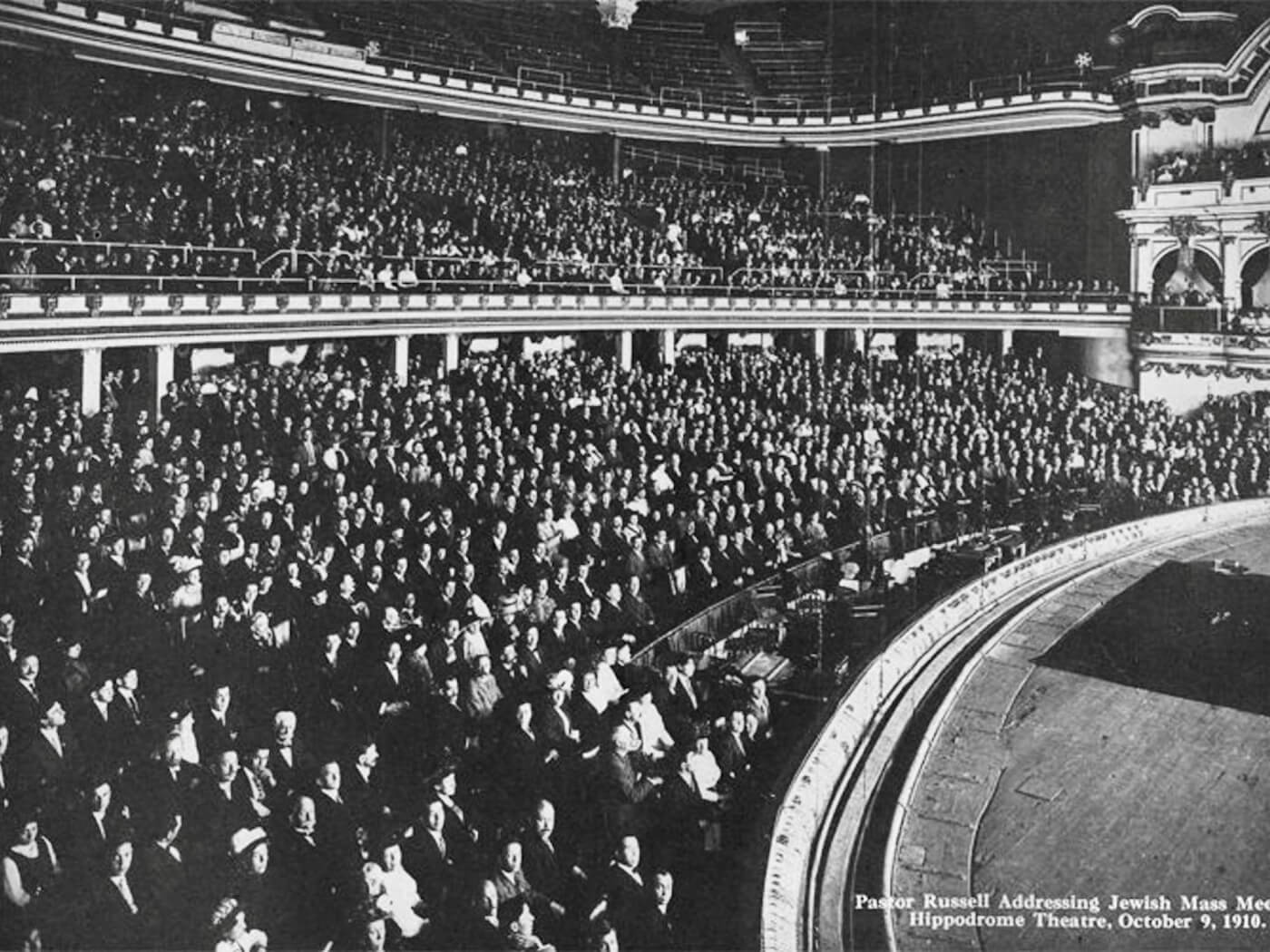
Russell addresses an audience of American Jews in New York in 1910. Photo | Public Domain
It is unknown whether Rothschild or Hirsch was influenced at all by Russell’s letter, though Russell’s ideas did have a lasting impact on some prominent American Jews and American Christians with regard to his promotion of Jewish immigration to Palestine.
The same year that Russell wrote his letter to de Rothschild and von Hirsch, another influential dispensationalist preacher wrote another document that is often overlooked in exploring the role of American Christians in the development and popularization of Zionism. William E. Blackstone, an American preacher who was greatly influenced by Darby and other dispensationalists of the era, had spent decades promoting with great fervor the immigration of Jews to Palestine as a means of fulfilling Biblical prophecy.
The culmination of Blackstone’s efforts came in the form of the Blackstone Memorial, a petition that pleaded that then-President of the United States Benjamin Harrison and his secretary of state, James Blaine, take action “in favor of the restoration of Palestine to the Jews.” The largely forgotten petition asked Harrison and Blaine to use their influence to “secure the holding at an early date, of an international conference to consider the condition of the Israelites and their claims to Palestine as their ancient home, and to promote, in all other just and proper ways, the alleviation of their suffering condition.”
As with Russell’s letter to de Rothschild and von Hirsch, it is unknown exactly how influential the Blackstone Memorial was in influencing the views or policies of Harrison or Blaine. However, the Blackstone Memorial petition is highly significant because of its signatories, which included the most influential and wealthiest Americans of the era, the majority of whom were Christians.
Signatories of the Blackstone Memorial included J.D. Rockefeller, the country’s first billionaire; J.P. Morgan, the wealthy banker; William McKinley, future president of the United States; Thomas Brackett Reed, then speaker of the House; Melville Fuller, Chief Justice of the Supreme Court; the mayors of New York City, Philadelphia, Baltimore, Boston and Chicago; the editors of the Boston Globe, New York Times, Washington Post, and Chicago Tribune, among others; and numerous other members of Congress, as well as influential businessmen and clergymen. Though some rabbis were included as signatories, the petition’s content was opposed by most American Jewish communities. In other words, the primary goal of Zionism, before it even became a movement, was widely supported by the American Christian elite, but opposed by American Jews.
The Blackstone Memorial would later attract the attention of Louis Brandeis, one of the most prominent American Jewish Zionists, who would later refer to Blackstone as the real “founding father of Zionism,” according to Brandeis’ close friend Nathan Straus. Brandeis would eventually succeed in convincing an elderly Blackstone to petition then-President Woodrow Wilson with a second Blackstone Memorial in 1916 that was presented in private to Wilson nearly a year later.
Instead of gathering signatures from prominent members of America’s elite class, Blackstone this time focused on shoring up support from Protestant organizations, namely the Presbyterian Church, in keeping with Wilson’s Presbyterian faith. According to historian Jerry Klinger, president of the Jewish American Society for Historic Preservation, this change in focus had been Brandeis’, not Blackstone’s, idea.
Alison Weir, author of Against Our Better Judgment: The Hidden History of How the U.S. Was Used to Create Israel, described Brandeis as “one of the most influential” American Zionists and a key figure in the efforts to push Wilson to support the formation of a Jewish state in Palestine, of which Blackstone’s second petition was part. However, Weir asserted that Blackstone’s second petition was secondary to a so-called “gentleman’s agreement” whereby English officials promised to support a Jewish state in Palestine if American Zionists, led by Brandeis, were able to secure the United States’ entry into World War I.
Wilson ultimately supported Blackstone’s new document, which was never presented publicly to the president, but privately by Rabbi Stephen Wise. This second Blackstone Memorial was a key component of the Brandeis-led campaign that eventually guaranteed American support — i.e., private support — for the Balfour Declaration, which established British intentions to support a Jewish ethnostate in Palestine. Notably, the Balfour Declaration is named for the then-English Foreign Secretary Arthur Balfour, himself a Christian dispensationalist, though Weir told MintPress that Balfour was more likely influenced by political imperatives than religious motives. The only person in the British cabinet to oppose the Balfour Declaration was its only Jewish member, Edwin Montagu.
The Balfour Declaration was addressed to a member of the Rothschild banking family, Lionel Walter Rothschild, the last in a series of letters written to members of the Rothschild family urging them to use their wealth and political influence to favor the creation of a Jewish state in Palestine: from Rabbi Kalisher, who wrote to Baron Amschel Rothschild in 1836; to Charles Taze Russell, who wrote to Edmond de Rothschild in 1891; and finally to the Balfour Declaration, written to Lionel Walter Rothschild in 1917.
Weir told MintPress that the Rothschilds figure so prominently in these early efforts to establish a Jewish state in Palestine owing to “their wealth and the power that goes with it,” making them very sought after by those who felt that a Jewish state could be formed in Palestine by the purchase of the territory by wealthy European Jews, as both Kalisher and Russell had proposed. However, the Balfour Declaration was addressed to the Rothschilds because, at that time, members of the Rothschild family, Edmond de Rothschild in particular, had become among the strongest supporters of the Zionist cause.
Though the declaration carries his name, it is unclear whether Balfour himself actually authored the document. Some historians — such as Michael Rubinstein, former president of the Jewish Historical Society of England — have made the case that the declaration itself was written by Leopold Amery, then-political secretary of England’s War Cabinet and a Zionist who, despite his commitment to the Zionist cause, obfuscated his Jewish roots for much of his career for reasons that are still the source of speculation.
As shown by the Balfour Declaration and the lobbying efforts that led to its creation, support for what would soon become known as Zionism among the nobility of England and the United States was already formidable before Herzl even began work on The Jewish State. It is worth considering that the power and influence of this religiously-motivated class of Christian elites had an influence on Herzl and his ideas, particularly given the fact that dispensationalist Christians had been promoting a Jewish ethnostate in Palestine at a time when the idea was unpopular among many prominent Jews in Europe and the United States.
Furthermore, the role of Christian Zionists, as they would later become known, continued well after Herzl began his Zionist activities, and resulted in many of the most influential acts that led to the establishment of the State of Israel, including the Balfour Declaration.
Notably, Herzl’s own success in promoting his views following the publication of The Jewish State was largely due to English dispensationalist pastor William Hechler. Hechler, while serving as chaplain at the British Embassy in Vienna, forged an alliance and later close friendship with Herzl and was critical to negotiating meetings between Herzl and prominent members of the German government, including Kaiser Wilhelm II, which lent necessary political legitimacy to Herzl’s Zionist movement.
A largely overlooked figure in the rise of Zionism, Hechler is mentioned in Herzl’s diary more than any other person and passionately felt that the creation of a Jewish state in Palestine would bring about the end times. Hechler is also known to have been extremely interested in the construction of a Third Jewish Temple on the Temple Mount, having devoted considerable time to creating models of that Temple, some of which he prominently displayed in his office and showed to Herzl with great enthusiasm during their first meeting.
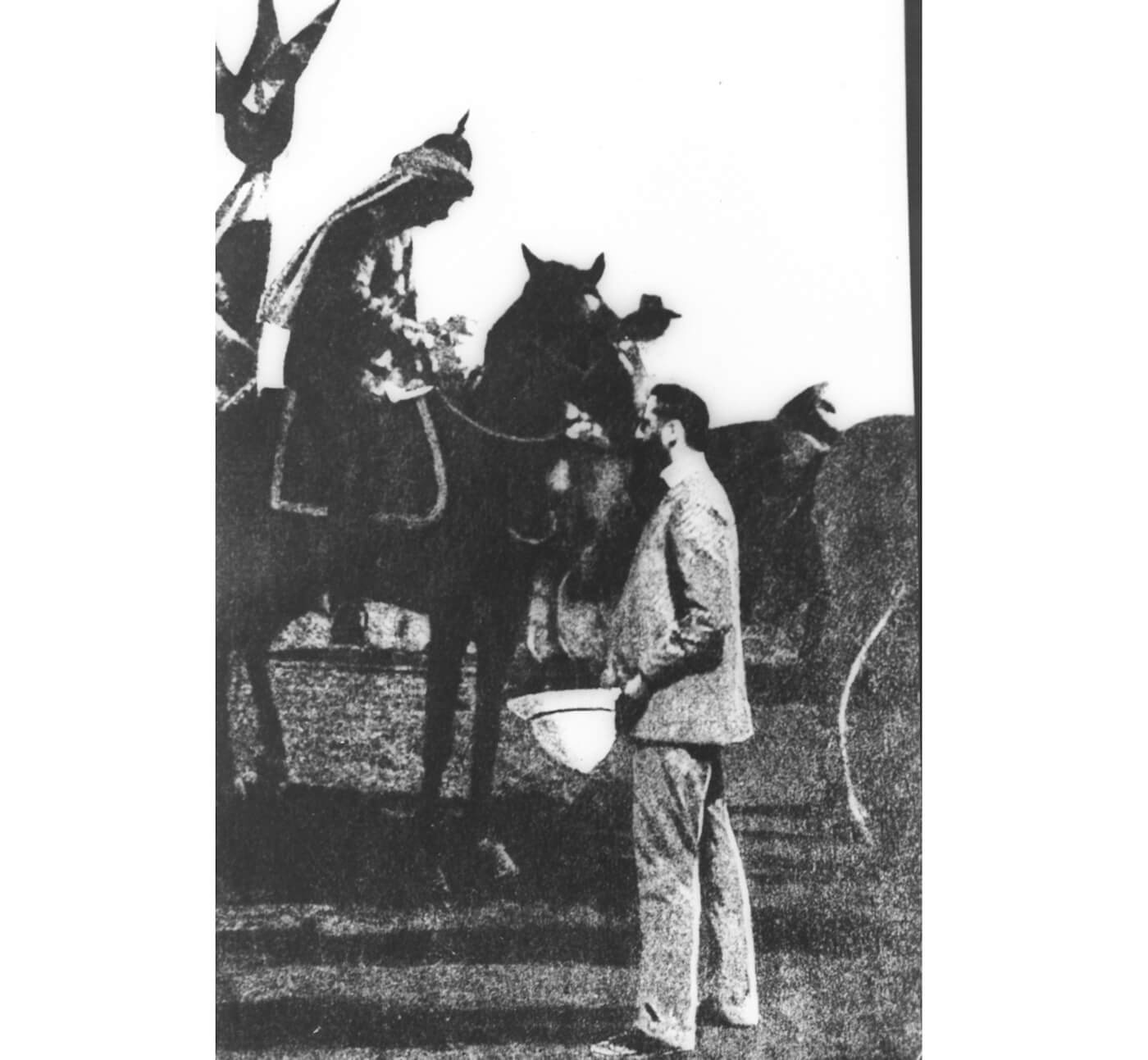
Herzl gives Kaiser Wilhelm II a tour of an early Jewish settlement near Jaffa, Palestine in 1898. Photo | Israel GPO
The Hechler-Herzl alliance is one early example of how Christian Zionists and Jewish Zionists each used the motivations of the other for political gain despite the fact that Christian Zionists often hold anti-Semitic views and secular Zionists, as well as religious Zionists, do not hold Christianity in high regard. This opportunism on the parts of both Christian and Jewish Zionists has been a key feature in the rise of Zionism, particularly in the United States, and the case of Cyrus Scofield, the man more responsible than any for popularizing Christian Zionism among American evangelicals, offers another important example.
…
Read more at: MintPressNews.com
Submit a correction >>
Tagged Under:
big government, Charles Taze Russell, Christian Zionism, Christianity, Christians United for Israel, conspiracy, corruption, culture wars, Cyrus Scofield, deception, deep state, Hidden History, insanity, Jerry Falwell, Jewish state, John Nelson Darby, John Owen, left cult, Palestine, politics, propaganda, prophecy, Puritans, real history, religion, Theodore Herzl
This article may contain statements that reflect the opinion of the author
RECENT NEWS & ARTICLES
COPYRIGHT © 2017 BIG GOVERNMENT NEWS




